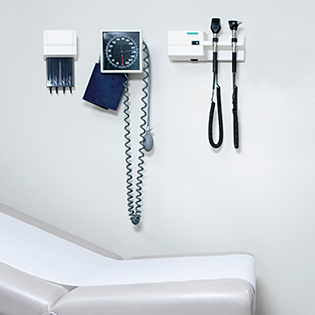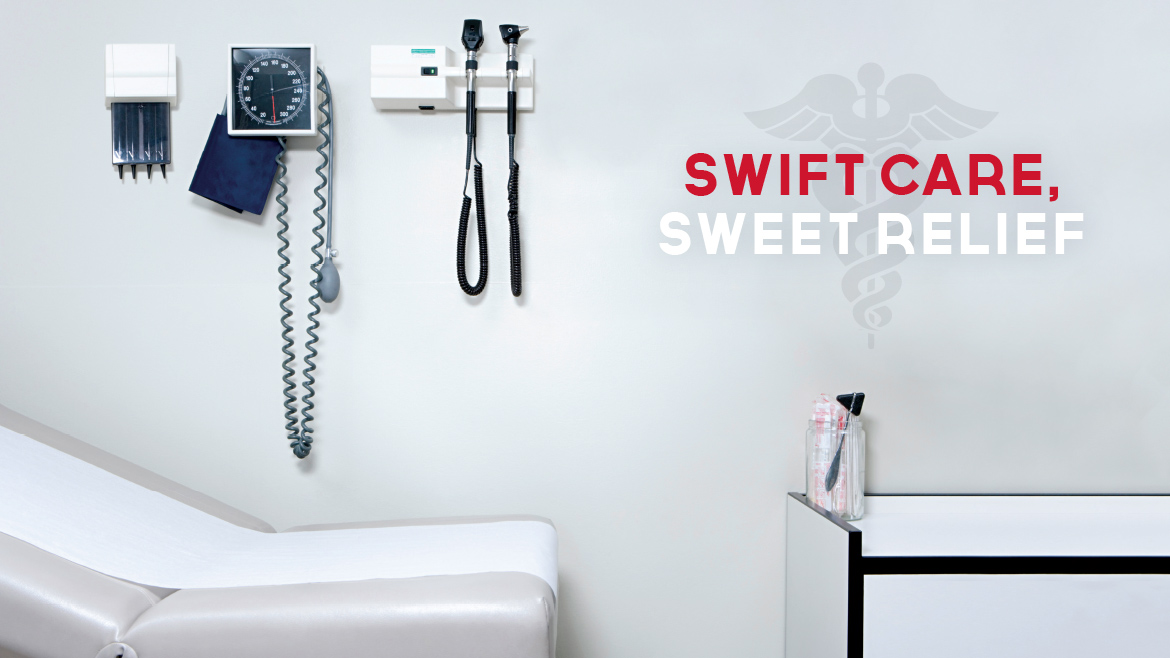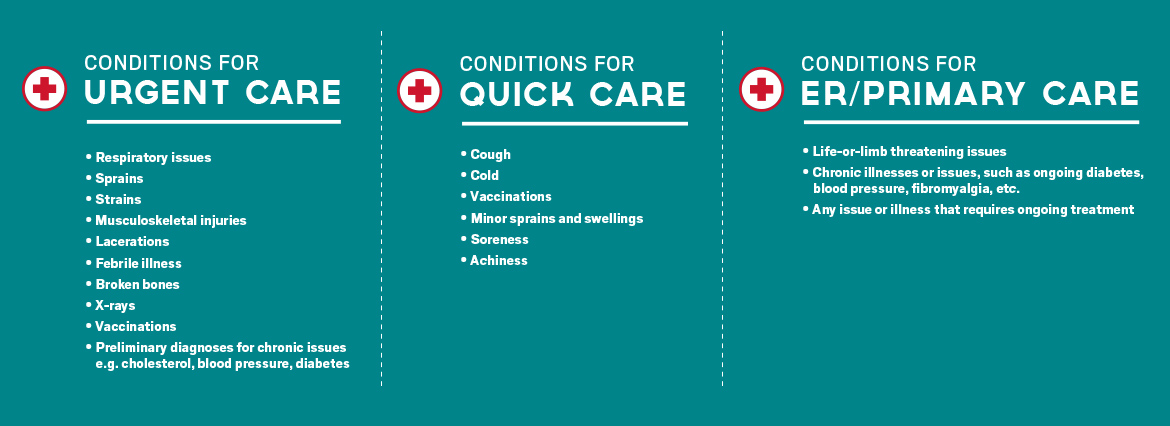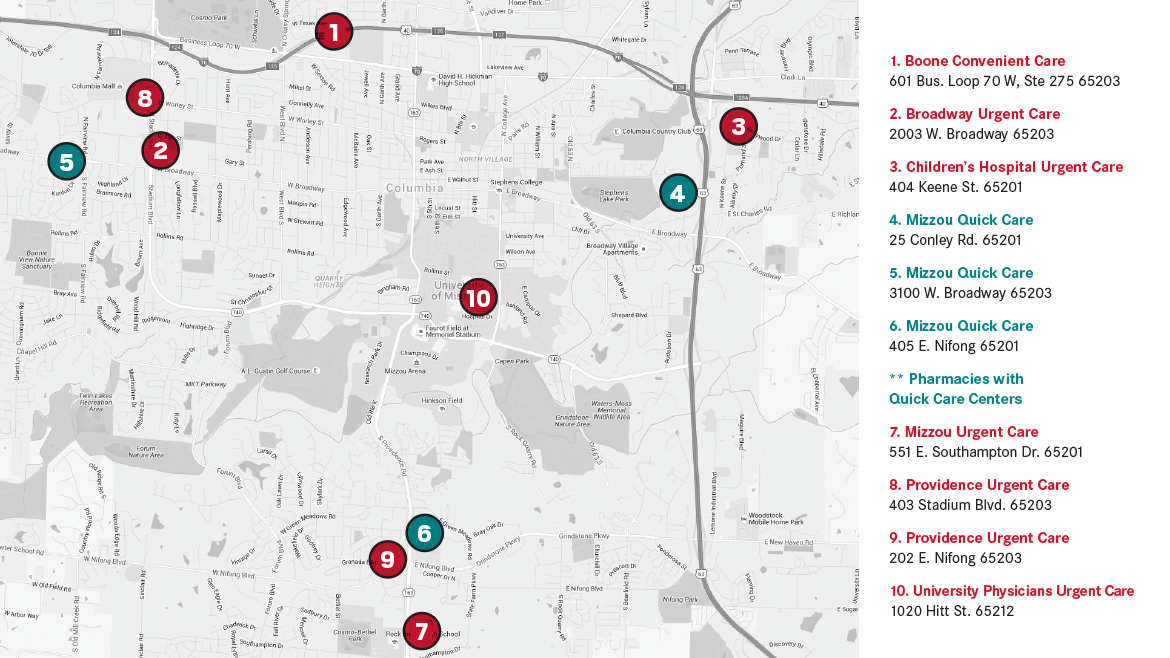Swift Care, Sweet Relief


Urgent care centers fill the gap between check-ups and emergencies.
Dr. Eric Bettis hurriedly pushes his guitar case off the hospital chair he uses as visitor seating in his office. The room is decorated with portrait collages of two smiling brothers and their sister, and a sign on the wall reads, “Behind every good kid is a great dad.” Bettis grins as he sits on the arm of the chair. He’s kind of bouncing with energy, like a kid who was forced to pause in the middle of building a fort and is ready to get back to it. He says he loves his job, and his enthusiasm shows it as he bounds out of the room, mid-interview, to visit an elderly patient who just walked in.
Bettis is the owner of Broadway Urgent Care, at 2003 W. Broadway, where he also practices as a physician. In 2010, he and his partner, Dr. Ross Duff, entered the booming American urgent care industry, looking to fill the niche that many American patients now demand — the aptly named need for immediate and urgent care.
Urgent care differs from emergency room care or regular practice on multiple levels. Urgent cares can be more affordable, available for walk-in visits and open for extended evening and weekend hours. They’re often located in high-accessibility consumer areas like strip malls and professional parks. The growth of the industry seems just as fast-paced as Bettis himself.
Bettis and Duff opened the center in 2010 after spending time working in a St. Louis urgent care center as a trial run. It had been Bettis’ dream for years to someday own his own center, and he used his time in St. Louis to get familiar with the ins and outs of operating an immediate care facility.
“We were there to make sure it was something we wanted to do,” Bettis says, “but also to learn what mistakes they made, so we could learn more about how their business plan worked. It was basically like we were able to do a practice run without our own money.”
And when it comes to money, the urgent care industry has plenty of it.
When Bettis and Duff opened their clinic on Broadway, they became one of many “doc in the box” operators that comprise a $14.5 billion industry in America. Around one-third of the nation’s urgent care centers are owned by hospitals or joint-venture relationships, though independent private care centers are still a major chunk of the market.
And it’s a growing market.
Popping up in strip malls, vacated offices and industrial parks, there are now more than 7,000 urgent cares in the U.S. Even in a small (albeit growing) town like Columbia, there are seven established urgent cares— not including the quick care centers you can find in Hy-Vees — with more on the way. According to the Urgent Care Association of America, 3 million patients visit urgent care centers each week.
Urgent cares have become popular due to the niche they fill for working Americans. Born out of convenience in the late ’70s, the ease-of-access, flexible hours and affordable costs are attractive to patients busy with work or family responsibilities.
“We are a country that is more and more into wanting immediate care and gratification,” Bettis says. “If something is broken, we want it fixed now and we don’t want to put our lives on hold. Urgent care has been the mainstay.”
Say a working mother with two children has a job that requires her to stay on the clock until 6 p.m. When she gets home, the babysitter tells her one of the children is running a fever. Their primary care doctor’s office has closed for the day, and the soonest appointment is four days away. Her options now come down to taking her child to the emergency room, waiting until the pediatrician is available, or running to the nearest urgent care where, hopefully, her kid can be seen immediately.
“If something is broken, we want it fixed right now and we don’t want to put our lives on hold. Urgent care has been the mainstay.”- Dr. Eric Bettis
Urgent care centers can be a good financial option for some patients as well. The average visit to the urgent care costs around $150, and most centers participate with major health insurance plans, according to Becker’s Hospital Review. Comparatively, the average ER visit can cost upwards of $1,300.
A 2015 article in Health Affairs reports that around half of all emergency room visits are for non-emergency reasons, and that 13.7 to 27.1 percent of all ER visits could have been handled in an urgent care setting, which means there are huge potential savings for patients. When the difference between a visit to the urgent care and a visit to the ER means a difference of $1,000 or more, the issue then becomes educating patients about when and why to seek the appropriate level of care.
Steve Sellars is a board member and president-elect for the UCAOA, as well as the CEO of Premier Health, an urgent care management association in Baton Rouge. Steve sees the role of American urgent care as somewhat of a blanket middleman for patients with a variety of ailments that require quick diagnosis and treatment. While he made it clear that urgent care should not be utilized as a replacement for a primary care physician and is not appropriate for life-or-limb threatening injuries (those require an ER), he does believe that urgent care centers can cover just about everything else.
“Lacerations, flus, fevers, cuts that may need stitches, possible broken bones, sprains, strains — those things are all appropriate for an urgent care setting, and we still see a lot of people going to the ER for those kinds of issues,” Sellars says. He also says that acute conditions are perfect for being handled in an urgent care setting, while chronic or emergency conditions — like ongoing high blood pressure issues or a heart attack — are more suited for primary physician and emergency care. He sees the role of urgent care as a sort of symbiotic relationship within the health care industry, as patients utilizing urgent care will lessen the stress and overcrowding that emergency room professionals often deal with.

“Urgent care centers allow primary care physicians to focus on ongoing care of chronic conditions,” Sellars says. “The way I like to think about it is that urgent care centers provide convenient access to quality, cost-effective health care services. So, for those times where a patient is unable to get in, [urgent care centers] are a very good alternative.”
So, exactly what kind of conditions are appropriate for an urgent care visit, and when might an issue need a higher level of care?
Dr. Tara Flynn is the medical director for MU Urgent and Quick Care. She began her job at the university three months ago after being employed at a privately owned urgent care.
“We heavily see acute respiratory illnesses — things like strep, flu, bronchitis and pneumonia — acute kid illnesses, like febrile illnesses, ear infections, worried parents who think they might miss something with their kids if they wait,” Flynn says. “Then we have another huge category, which is musculoskeletal injuries that have happened acutely, and a lot of the time these people can’t get in to see their regular doctors for these kinds of things soon enough, and they’re worried about causing more damage.”
Musculoskeletal injuries mean any injury to the bones, muscles or skin and include things like lacerations, sprains, strains and broken bones. By addressing these issues at an urgent care, the patient can save a lot of money, and the issue of ER overcrowding is lessened.
Another factor contributing to the growth of the urgent care industry is an aging population.
“That percentage of the population that is 65 and older is growing at a very fast pace, and these are people who tend to access care more than others,” Sellars says. “And we also have the Affordable Care Act, and we have 12 to 15 million other people with some form of coverage today who did not otherwise have coverage before.”
According to the Centers for Disease Control and Prevention, the population over the age of 65 will double to approximately 72 million during the next 25 years. Even though this group only makes up around 13 percent of the American population, they account for one-fourth of all physician hospital visits, 38 percent of all ER visits and nearly half of all diagnostic treatments and tests — again, a hefty chunk of health care and a large potential market for the urgent care industry.

All of these factors combine to create an unprecedented issue for health care access, which increases the need for convenient, affordable health care via quick or urgent care centers.
Unlike urgent cares, quick care centers are walk-in, preliminary options that are typically found in grocery stores, drug stores and even some big-box stores, like Target and Wal-Mart. These locations typically offer more topical diagnoses and treatments, like examining sore throats and swollen joints, or administering flu shots. Thought of as the first line of defense in health care, the quick care industry is growing right alongside urgent clinics to fill the instant-gratification demand around the country. They are often used as a triage of sorts, and many patients are referred to an urgent care or primary setting after they’ve been seen at a quick care location. While they can help with small, acute issues, quick cares are not able to do anything intensive, such as administer X-rays, examine broken bones, or diagnose heart issues.
MU Health System opened three new quick care locations in Columbia’s Hy-Vee grocery stores on Conley, West Broadway and East Nifong. Flynn also oversees these new locations and has high hopes for their future. Now, shoppers can get their groceries and flu shot in the same building, a level of instant health access that has never been seen before.
There are even digital health care options that complement a fast-paced lifestyle. Emerging digital technologies like the service HealthTap, founded by Stanford Graduate School of Business alum Ron Gutman, allow patients to talk with accredited doctors all across the country from their laptops, cellphones and tablets. The app, which has been called “Uber for doctors,” allows a person subscribed to this service to speak to a health professional, be diagnosed, and even be prescribed medicine without ever having to leave their home or actually meet a doctor face-to-face.
However, like quick and urgent care centers, digital health care services cannot replace emergency departments and ongoing primary care. It’s important for patients to know what level of care their ailment requires and to establish a relationship with a regular primary care provider. But life happens fast. Sometimes, urgent care is the right option.


